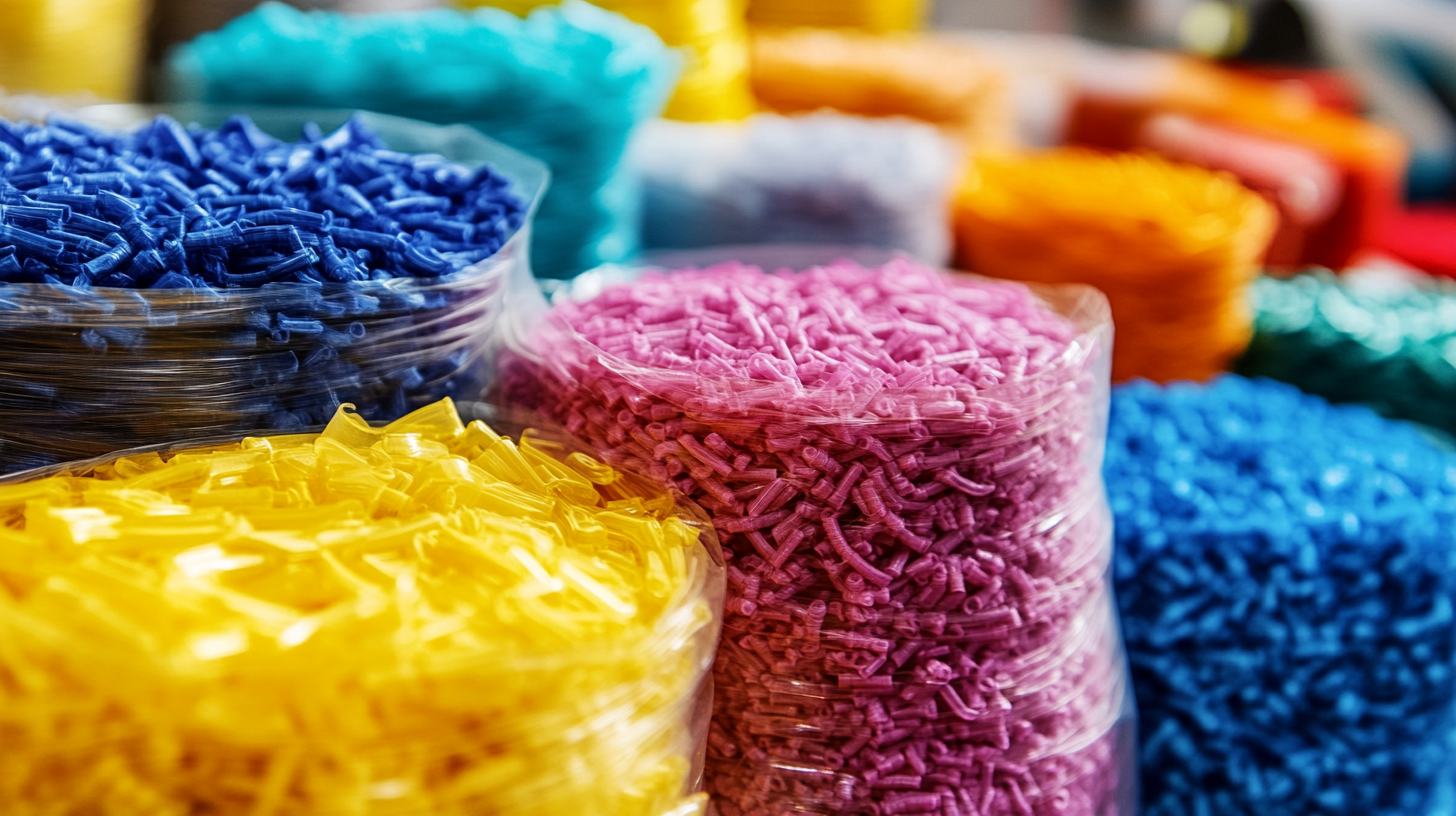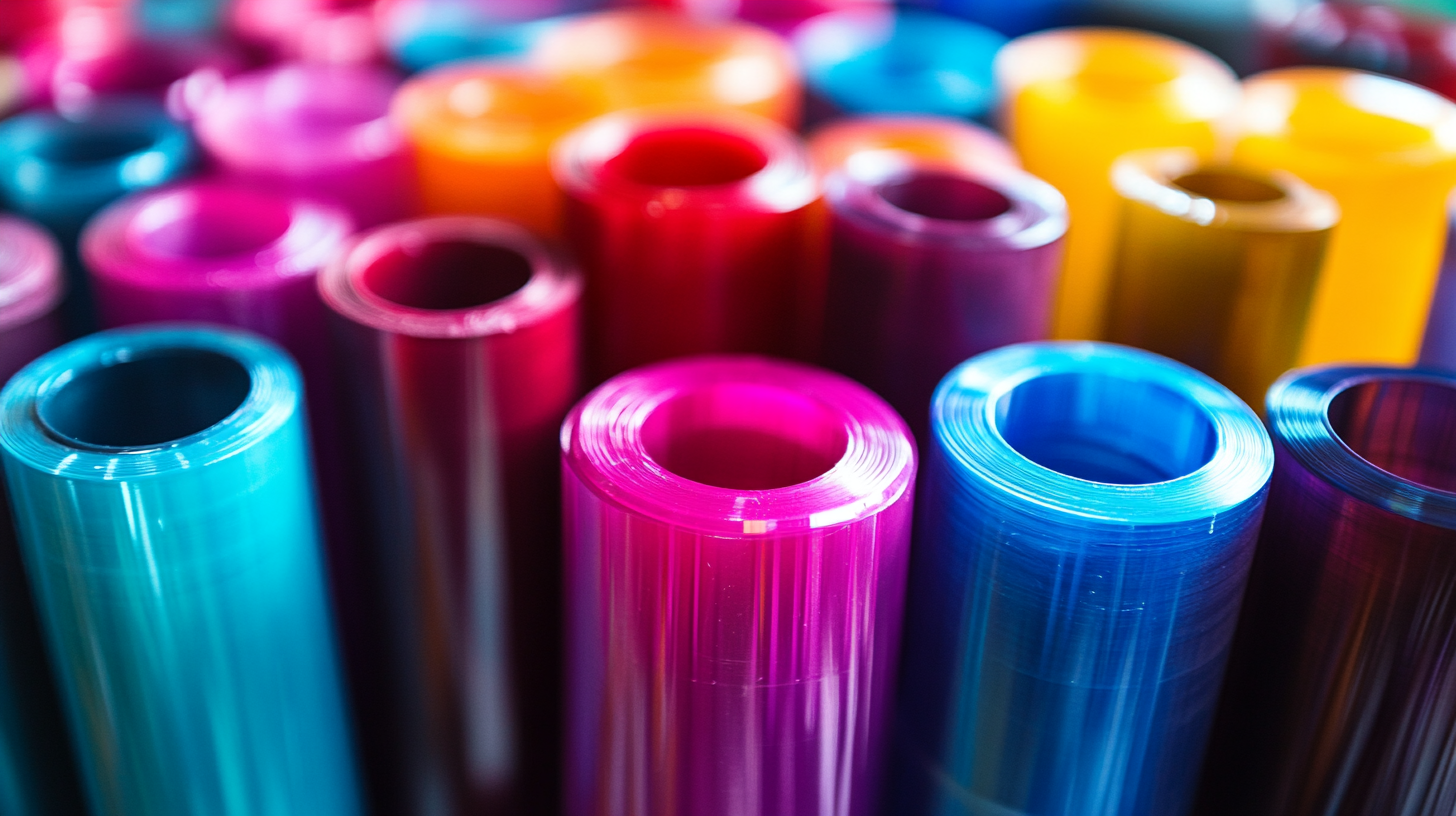


In the fast-evolving landscape of manufacturing, the selection of materials plays a pivotal role in determining product longevity and performance. Among various materials, Nylon Plastic stands out for its exceptional strength, versatility, and resistance to wear and chemicals. According to a recent report by Grand View Research, the global nylon market is expected to reach USD 24.7 billion by 2025, driven by the demand for lightweight and durable materials in sectors such as automotive, aerospace, and consumer goods. The adoption of Nylon Plastic is particularly significant due to its high tensile strength and flexibility, making it an ideal choice for a myriad of applications. This ultimate guide aims to provide comprehensive insights on sourcing the best Nylon Plastic tailored to your manufacturing needs, ensuring you understand its various types, properties, and optimal applications in today's competitive environment.

When it comes to manufacturing, selecting the right type of nylon plastic is crucial to achieving optimal performance and durability in your products. There are several common types of nylon, each with distinct characteristics that cater to various applications.
For instance, Nylon 6, known for its excellent toughness and flexibility, is often used in automotive parts and consumer goods. According to a report by MarketsandMarkets, the global nylon market is expected to reach USD 29.2 billion by 2026, driven by the increasing demand for lightweight and high-strength materials across various industries.
Nylon 66, another widely used variant, boasts superior heat and chemical resistance, making it suitable for high-performance applications, such as in electrical components and industrial machinery. A study by Technavio highlights that the increasing adoption of nylon 66 in the automotive sector, particularly for fuel lines and under-the-hood applications, is a major factor contributing to its growth. Understanding these differences is essential for manufacturers looking to leverage nylon plastics effectively, as the right selection can lead to improved product performance and longevity.
When selecting nylon plastic materials for manufacturing, it's essential to consider several key factors that can significantly influence performance and cost-effectiveness. One primary aspect is the specific application of the nylon product, as different formulations cater to varying requirements in strength, flexibility, and thermal resistance. The global adipic acid market, a critical precursor in nylon production, is projected to grow from $5.79 billion in 2025 to $7.86 billion by 2032, indicating a robust demand for nylon and its derivatives. This growth highlights the importance of sourcing high-quality nylon materials to meet increasing market expectations.
Another crucial factor is the processing method of nylon materials. For instance, 3D printing with nylon has gained traction due to its durability and versatility, making it a favored choice for producing long-lasting parts. Experts advocate for understanding the intricacies of nylon properties, considering moisture absorption, which can affect the material's mechanical properties and processing efficiency. Moreover, the mechanical recycling of polyamides poses challenges, particularly regarding thermal degradation during reprocessing. Thus, manufacturers must prioritize sourcing nylon plastics that align with their specific operational processes and environmental considerations.

 Nylon plastic has emerged as a go-to material in various manufacturing processes due to its remarkable properties. One of the top benefits of using nylon is its exceptional strength and durability. Unlike other plastics, nylon can withstand significant wear and tear, making it ideal for high-stress applications. This resilience ultimately translates to cost savings over time, as manufacturers can reduce the frequency of replacements.
Nylon plastic has emerged as a go-to material in various manufacturing processes due to its remarkable properties. One of the top benefits of using nylon is its exceptional strength and durability. Unlike other plastics, nylon can withstand significant wear and tear, making it ideal for high-stress applications. This resilience ultimately translates to cost savings over time, as manufacturers can reduce the frequency of replacements.
Another key advantage of nylon is its resistance to chemicals and heat. This quality ensures that products maintain their integrity even when exposed to harsh environments. Manufacturers should tip into this feature when selecting materials for components that require longevity and reliability.
Lastly, nylon plastic is highly versatile, allowing manufacturers to create a plethora of products ranging from automotive parts to consumer goods. Its easy moldability and adaptability make it a favorite in both mass production and custom manufacturing. When sourcing nylon plastic, consider partnering with suppliers who emphasize quality control and offer a variety of grades to meet specific project needs. This approach will enhance your production efficiency and product performance.
When evaluating the quality of nylon plastic suppliers, it is crucial to consider several key factors that can significantly impact your manufacturing needs. The recent opening of a state-of-the-art technology center dedicated to research and development in nylon highlights the importance of innovation in this field. Suppliers that invest in advanced technology are more likely to offer high-quality nylon plastics, enabling you to stay ahead in the competitive manufacturing landscape.
**Tips:** One way to assess supplier quality is to investigate their production processes and certifications. Look for suppliers who adhere to industry standards and implement quality control measures. This can often be demonstrated through third-party certifications which ensure that the materials meet required specifications.
Additionally, consider the supplier's reputation in the market. Reviews and testimonials from other manufacturers can provide insights into their reliability and product performance. Engaging with suppliers who offer transparency in sourcing materials and can provide detailed specifications will empower your decision-making process, ensuring that you choose nylon plastics that align with your project's requirements effectively.
When it comes to sourcing nylon plastic for manufacturing, the quality and consistency of the material can greatly impact project outcomes. According to a report by the Plastics Industry Association, the demand for nylon plastics is projected to grow at a CAGR of 5.4% through 2025, emphasizing the importance of selecting the right supplier. To find the best nylon plastic for your projects, consider industry-specific trade shows and exhibitions, as they offer direct access to leading manufacturers and emerging technologies.
Tip: Always request samples before making a bulk order. This allows you to assess material integrity, flexibility, and durability against your specific requirements. It’s also beneficial to evaluate the supplier's reputation and reviews from other customers to ensure reliability.
Furthermore, leveraging online platforms like ThomasNet or Maker's Row can lead you to reputable suppliers with a strong track record. Industry newsletters and publications often highlight top manufacturers and emerging trends, providing valuable insights for informed sourcing decisions. By combining traditional sourcing methods with up-to-date digital resources, you can maximize the quality of nylon plastic in your manufacturing process while maintaining cost efficiency.
| Sourcing Criteria | Description | Sourcing Channels | Estimated Cost ($/kg) |
|---|---|---|---|
| Type of Nylon | Choose based on application: PA6, PA66, etc. | Manufacturers, Distributors | $2.50 |
| Quality Standards | Regulatory requirements and certifications | Trade Shows, Online Marketplaces | $3.00 |
| Minimum Order Quantity | Consider volume needs for cost efficiency | Direct Suppliers, B2B Platforms | Varies |
| Lead Time | Time taken from order to delivery | Local vs. International Suppliers | N/A |
| Sustainability Practices | Eco-friendly sourcing and production methods | Sustainable Suppliers | N/A |